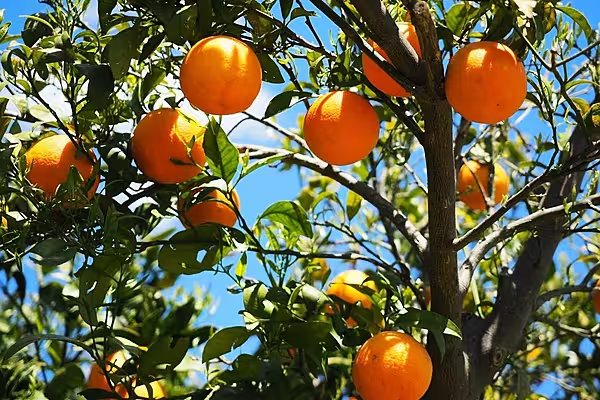In this edition of Buyer's Brief, Nick Peksa explores how global climactic conditions and energy costs are influencing the sugar sector. This article first appeared in ESM's September/October 2023 edition.
The summer months are normally a period when most of the European industry either slows down or goes on holiday.
The same thing cannot be said for the food industry. Sugar prices have been climbing, coffee prices have been converging, and cocoa prices have been going crazy.
On the whole, in Northern Europe, weather conditions have been good and sugar beet has been progressing well – however, sugar in the rest of the world is experiencing much more turbulence. It is very interesting to note that the EU sugar price has broken away from the world sugar price.
Sugar Prices
Even though a global sugar surplus of 0.9 million tonnes is expected in the 2022/23 season, sugar prices have experienced a notable surge in recent months, reaching their highest level in over 11 years.
This price increase can be attributed to the growing cost of energy, which has prompted a diversion of more sugar cane into ethanol production, rather than traditional sugar consumption. The weather is also playing a major role in market speculation.
The global sugar market is currently influenced by the interplay between the robust progress of the Brazilian crop and unfavourable weather conditions in Asia. Sugar prices on the futures markets briefly declined in the run-up to July, however, the presence of El Niño, which was officially confirmed by the US’s Climate Prediction Center in June, is already impacting India and Thailand (both significant players in the global market).
Odds that it will last through winter increased from 90% to 95%, compared to last month’s forecast, and the chance of a strong event is now above 60%.
Brazil
The Brazilian sugar market has shown a positive performance in recent months, with favourable crop results and increasing production.
Since the beginning of the crop, the Centro-Sul region in Brazil has produced 9.5 million metric tonnes (MMT) of sugar, marking a significant 32% increase, compared to the previous crop. UNICA, the Brazilian Sugarcane Industry Association, reported agricultural yields of 95 tonnes per hectare (t/ha), reflecting a remarkable 26% improvement over the previous crop.
This increase can be attributed not only to favourable weather conditions during the off-season, but also to the harvesting of a higher proportion of planted cane in the current season.
Brazil’s sugar cane crushing for the 2023/24 season is expected to rise to 606.5 MMT, exceeding the previous estimate of 598.5 MMT. Analysts predict that sugar production for the 2023/24 season in Brazil will reach a record-breaking 39.1 MMT, surpassing the previous record of 38.47 MMT achieved in the 2020/21 season.
Ethanol production from sugar cane and corn, estimating a volume of 31.19 billion litres, will rise by 7.9% this season, and therefore place further pressure on pricing.
India
The world’s second-largest sugar producer experienced a decrease in production during the 2021/22 season, producing approximately 36.5 MMT of sugar. The latest production figures for the 2022/23 season in India show a 9% year-on-year decrease in sugar output.
By mid-June, the harvest had generated 32.2 MMT of sugar, and the total output for the season is expected to reach 32.7 MMT, including special-season production.
In India, the onset of monsoons occurred significantly later than usual, resulting in rainfall volumes (as of 22 June) that were 78% below the historical average, with the major sugar-producing states of Maharashtra and Karnataka experiencing deficits of 89% and 76%, respectively.
If the rainfall deficit persists into the first half of July, there may be a need to downgrade the Indian crop numbers, leading to further reduction in Indian sugar exports for the 2023/24 season. Historically, lower rainfall from June to September in India has had a significant impact on the subsequent season’s sugar production.
Thailand
Thailand is the world’s second-largest sugar exporter. Thailand’s 2022/23 sugar production climbed by 14%, to 11.55 MMT. The 2023/24 season is looking far from favourable, as Thailand’s cane areas continue to face dry weather conditions, except for the north-east region, which has recently seen some recovery in moisture, due to June rains.
However, the central and northern cane areas remain dry and require additional rainfall. Thailand has experienced a record-low cumulative rainfall since the beginning of the year, although some rain has been observed in the northern regions. Rainfall across the country may be around 10% below average during the monsoon season.
The official production estimate of 90 MMT of sugar cane by the Thai Millers’ Association may be too optimistic, considering the current rainfall expectations. A more realistic range would be 70 MMT to 80 MMT of sugar cane – if rainfall continues to disappoint, then production could be even lower.
This reduction in Thailand’s crop could result in a regional shift in demand towards Brazil and Australia, as India is facing supply shortages.
The severe weather conditions in Thailand, attributed to the El Niño phenomenon, are likely to continue to force the price of sugar upwards. Thailand’s drought-induced impact will have significant repercussions on global prices.
If El Niño weather patterns persist, this could further reduce precipitation over the next two years, potentially keeping sugar prices elevated.
EU
The sugar beet area in the EU remains unchanged for the 2023/24 season. Despite challenges such as aphids, delayed planting, and adverse weather conditions, EU sugar production is still projected to reach 15.5 MMT.
The crop initially faced challenges as a result of a cold and rainy period in March and April, which led to the delayed sowing of sugar beet across many countries. This was followed by a rain deficit and sunny conditions in beet-growing regions in May and June. While the sunny and warm weather has been favourable for the EU crop, it has also created conditions conducive to the multiplication of aphid populations.
Most EU countries have already completed their sugar beet planting, and now the focus shifts to yield expectations for the 2023/24 crop. In June, initial estimates were that the combined EU and UK production was projected to reach 16.3 MMT – 4% higher than the five-year average – however, due to mixed weather conditions across the region, this has been downgraded slightly, to 2% higher than the five-year average.
Certain EU countries have expanded their sugar beet-planting areas. Poland, for instance, increased its area by 18%, year on year, to 260 thousand hectares (kha), while Germany saw a 2% year-on-year increase, to 358 kha. On the other hand, France has reduced its beet area by 7%, to 324 kha, compared to the previous year.
Trade will continue to play a significant role in driving the EU sugar market, with net imports expected for another season. Due to soaring EU sugar prices and Ukrainian sugar having free access to the EU market, substantial imports have taken place from Ukraine to various parts of the EU.
Imports have surged to a range of 3.0-3.1 MMT, doubling the imports of the 2022/23 season.
China
In the last month, there have been several rumours that China will return to importing raw sugar. From January to April, China had been reliant on its sugar stockpile. It only imported one cargo vessel of raw sugar in this period.
Ending Thoughts
Recently, there has been some discussion of food inflation slowing down and, in some cases, reversing. At the same time, there have been reports of excellent berry harvests in some regions of Europe.
Even though there have been significant decreases in some of the major commodities, inflated food prices will remain for the next 12 months. Some of the more global markets, which are driven by global trade, may remain in tight supply for a while to come.
With a high probability that El Niño will be a strong event, the outlook for sugar is looking increasingly sour.
For more information, contact nick.peksa@cost-insights.co.uk.














